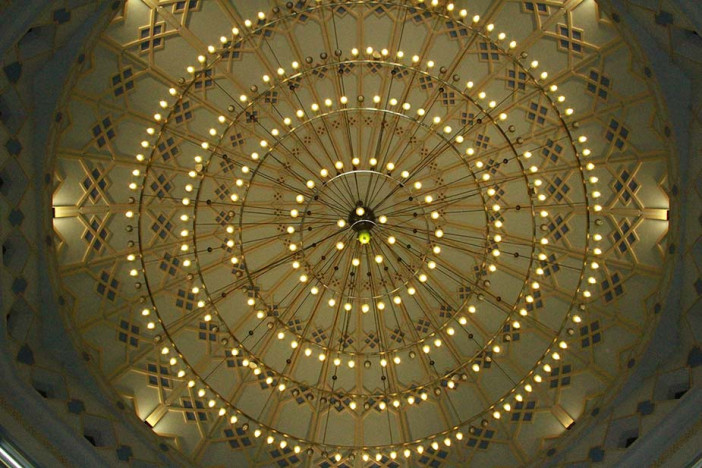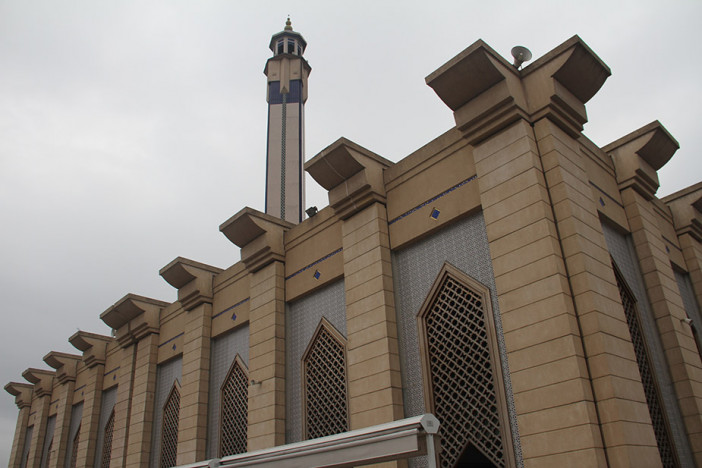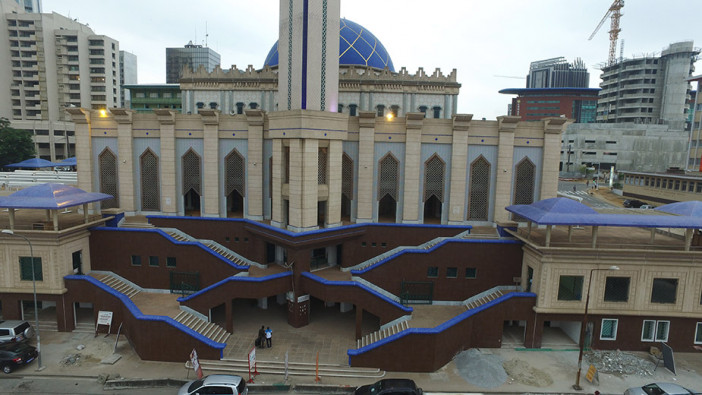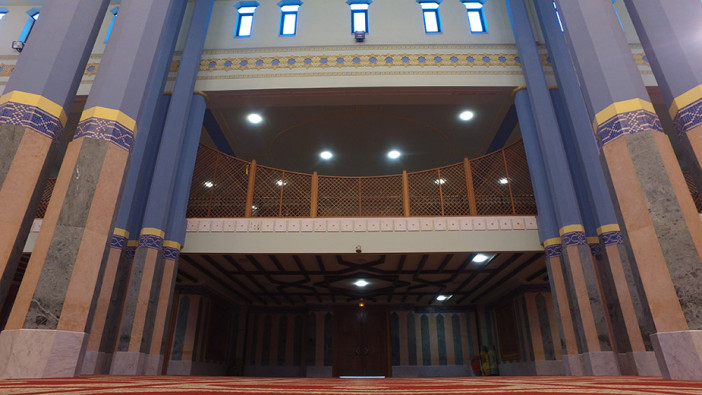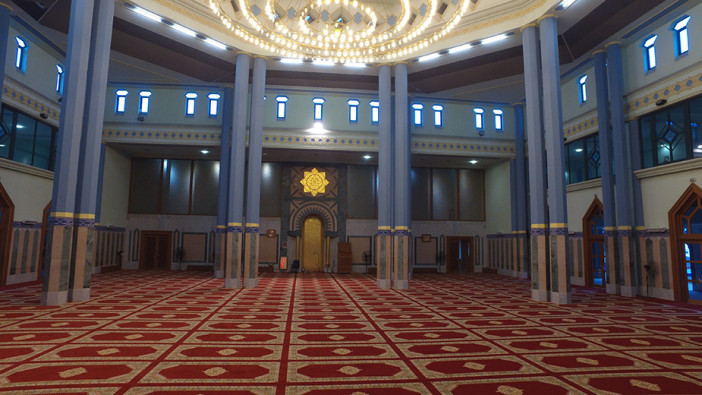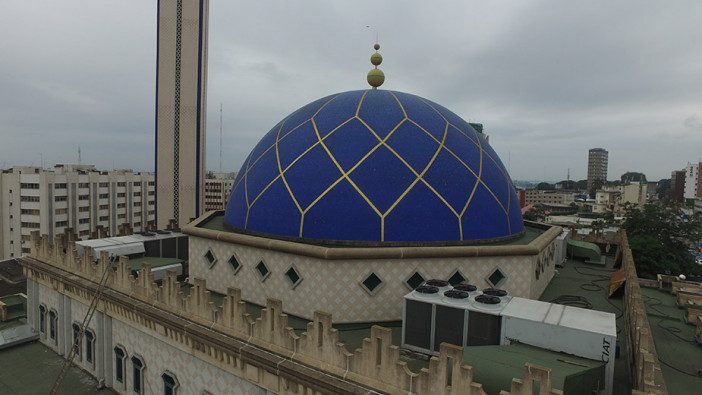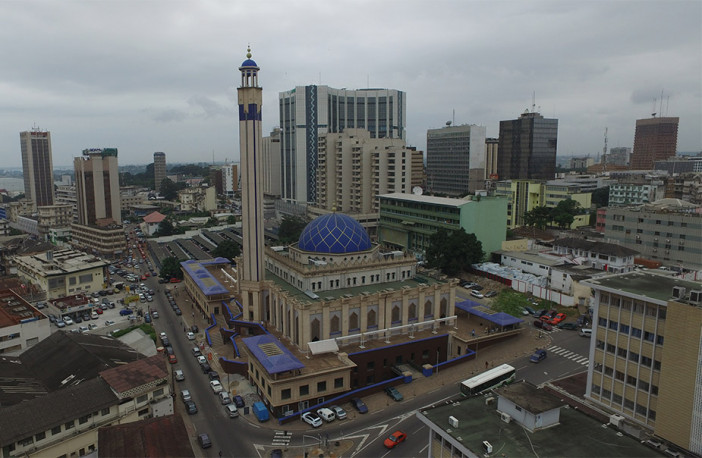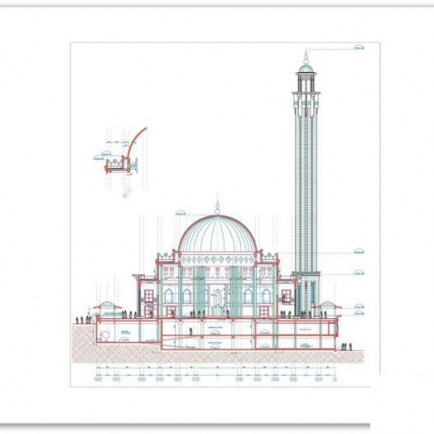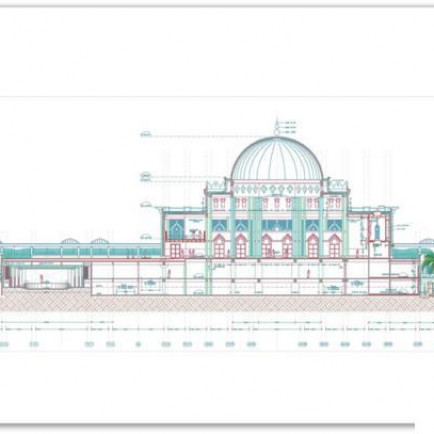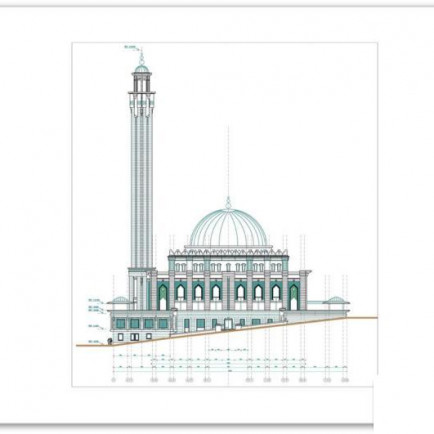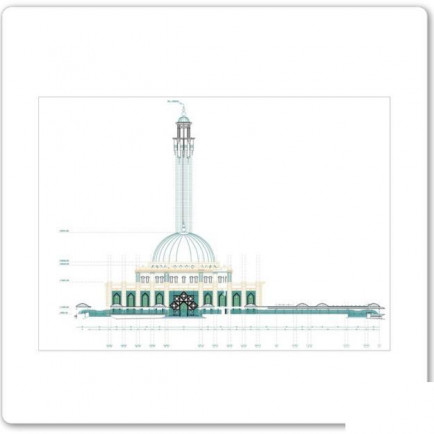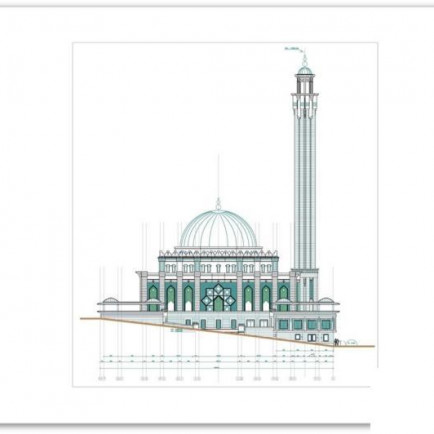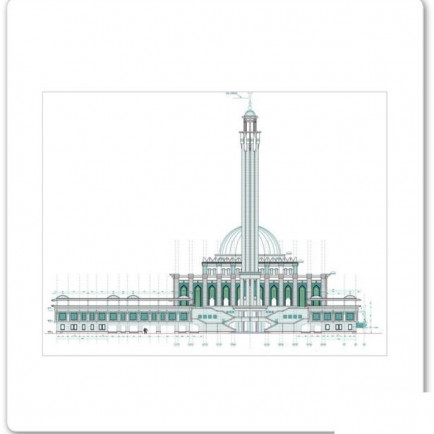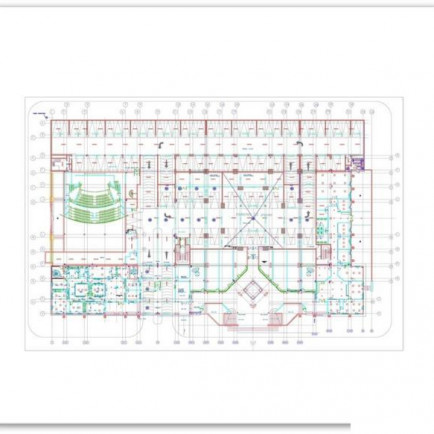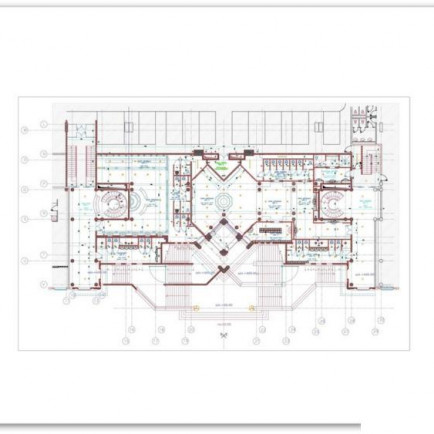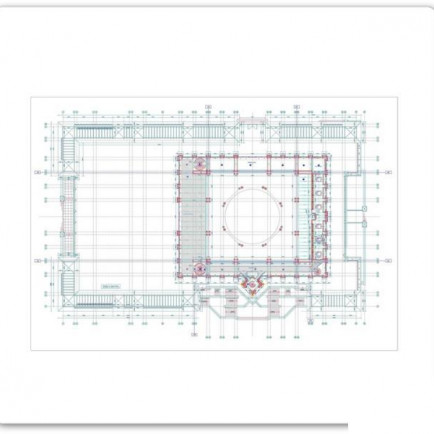Plateau Mosque
History
The mosque was built through several years due to funding issues.
Timeline :
- In 1994, the foundation stone for the construction of the SALAM mosque in Plateau was laid by His Excellency President Henry Konan BEDIE.
- In 1996, the works started with the subsidies of the State and various donors including the ZEID Charity Foundation of the United Arab Emirates and the AGA-KHAN Foundation.
- In 1999, following the military coup, the work was stopped. During this period of political transition under the National Committee of Public Salvation (CNSP), a ministerial delegation was sent by His Majesty Hassan II, King of Morocco. Its mission was to inquire about the state of progress of the work and to determine the level of intervention of His Majesty who had committed to participate in the finishing work of the Mosque. Once on site, the delegation was surprised to find that the finishing work had been entrusted to an Italian company that unfortunately will not complete the work ...
- In 2007, during a meeting of the Muslim community with His Excellency President Laurent Gbagbo on the situation of pilgrims who could not perform the Hajj the previous year, Imam Cisse Djiguiba, wished that the President would allow the holding of prayers at the SALAM Mosque given the inconvenience on the parking lot. Responding favorably to this request, the President gave instructions to his Deputy Director of Cabinet for the establishment of a construction committee in connection with the BNETD to resume work. And the work resumed until 2011.
- In 2012, His Excellency President Alassane Ouattara resumed the work until completion. Since that date and for the same purpose, other funds have been mobilized including the contribution of the faithful (every Friday), economic operators and the Kingdom of Saudi Arabia
Urban and Architectural
The Mosque is built on a plot of land of about 7,500 m². It is surmounted by a minaret with a height of 65 m and has a capacity of 6,500 worshippers (3,500 on the esplanade and 3,000 in the prayer hall). The Mosque has several premises spread over 4 levels:
- Level 1
- 10 administrative offices
- 9 offices for Muslim associations
- 6 stores (all rented)
- 1 parking lot for 150 vehicles (more spaces available)
- Level 2
- 1 ablution area for women
- 1 ablution area for men
- 1 accommodation for the Imam
- 1 amphitheater (300 seats)
- 1 library
- Level 3
- 1 prayer hall (2,500 seats)
- 1 office for the Imam
- 1 private prayer room for the Imam
- 1 private ablution area for the Imam
- 1 mortuary room
- 1 esplanade of 3.000 m² (3.500 places)
- Level 4
- 1 mezzanine for women (500 places)
Description
Course of the work carried out from March 1996 when they started the construction. Then by December 1999, Work stopped due to insufficient financial resources. On the 2nd semester of 2007 a partial resumption of the works began with a rate of progress of 65 % overall. Until it was inaugurated in 2012.
References
http://www.cosmosq.ci/fr/plan_architectural/index.html
https://www.mosqsalamplateau.net/index.php/historique
https://journals.openedition.org/com/7805
Details
Location
Plateau Mosque, Av. Crosson Duplessis, Abidjan, Côte d’Ivoire
Worshippers
6500
Owners
State of Côte d'Ivoire and Donators
Year of Build
2012
Area
7500
Drawings
Map
History
The mosque was built through several years due to funding issues.
Timeline :
- In 1994, the foundation stone for the construction of the SALAM mosque in Plateau was laid by His Excellency President Henry Konan BEDIE.
- In 1996, the works started with the subsidies of the State and various donors including the ZEID Charity Foundation of the United Arab Emirates and the AGA-KHAN Foundation.
- In 1999, following the military coup, the work was stopped. During this period of political transition under the National Committee of Public Salvation (CNSP), a ministerial delegation was sent by His Majesty Hassan II, King of Morocco. Its mission was to inquire about the state of progress of the work and to determine the level of intervention of His Majesty who had committed to participate in the finishing work of the Mosque. Once on site, the delegation was surprised to find that the finishing work had been entrusted to an Italian company that unfortunately will not complete the work ...
- In 2007, during a meeting of the Muslim community with His Excellency President Laurent Gbagbo on the situation of pilgrims who could not perform the Hajj the previous year, Imam Cisse Djiguiba, wished that the President would allow the holding of prayers at the SALAM Mosque given the inconvenience on the parking lot. Responding favorably to this request, the President gave instructions to his Deputy Director of Cabinet for the establishment of a construction committee in connection with the BNETD to resume work. And the work resumed until 2011.
- In 2012, His Excellency President Alassane Ouattara resumed the work until completion. Since that date and for the same purpose, other funds have been mobilized including the contribution of the faithful (every Friday), economic operators and the Kingdom of Saudi Arabia
Urban and Architectural
The Mosque is built on a plot of land of about 7,500 m². It is surmounted by a minaret with a height of 65 m and has a capacity of 6,500 worshippers (3,500 on the esplanade and 3,000 in the prayer hall). The Mosque has several premises spread over 4 levels:
- Level 1
- 10 administrative offices
- 9 offices for Muslim associations
- 6 stores (all rented)
- 1 parking lot for 150 vehicles (more spaces available)
- Level 2
- 1 ablution area for women
- 1 ablution area for men
- 1 accommodation for the Imam
- 1 amphitheater (300 seats)
- 1 library
- Level 3
- 1 prayer hall (2,500 seats)
- 1 office for the Imam
- 1 private prayer room for the Imam
- 1 private ablution area for the Imam
- 1 mortuary room
- 1 esplanade of 3.000 m² (3.500 places)
- Level 4
- 1 mezzanine for women (500 places)
Description
Course of the work carried out from March 1996 when they started the construction. Then by December 1999, Work stopped due to insufficient financial resources. On the 2nd semester of 2007 a partial resumption of the works began with a rate of progress of 65 % overall. Until it was inaugurated in 2012.


